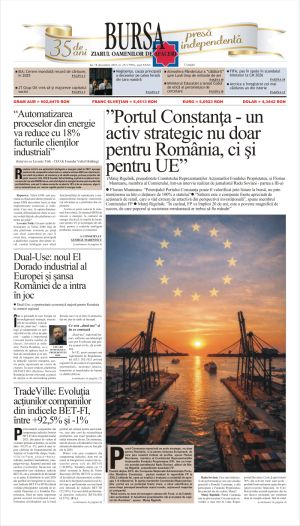The IMF annual report on the United States economy, published on the IMF website before the data on the economic "growth" achieved in the second quarter, is quite optimistic. "As a result of their increasingly strong and comprehensive policy measures, the sharp fall in economic output seems to be ending, and confidence in financial stability has strengthened," the IMF economists wrote.
The keyword here is "seems." The data released by the Bureau of Economic Analysis (BEA) indicate that the recession in the United States deepened from (-)3.2% to (-)3.9%. (SEE CHART). However, the markets focused on the annualized economic recession rate. But what does this annualized rate of (-)1% tell us?
As far as the prospects for recovery of the U.S. economy, it tells us nothing, especially considering that the estimates for the first quarter of 2009 changed from (-)5.7% to (-)5.5% and then to (-)6.4%. The collapse of private investment and consumption were offset by a 10.9% increase in public spending. Are the creditors of the United States still capable to sustain "the American dream," especially considering that the performance of the dollar threatens to cause them further loss?
The uncertainties about the prospects of the U.S. economy are fuelled also by a series of confusions in the reports coming from the news agencies. An article published on the Reuters U.K. website ("IMF Says Worst Over For U.S. Economy," 31 July 2009) indicates that the U.S. economy receded by an annualized (-)1% in the second quarter.
Unfortunately, the author mistook the annual rate (i.e. the change compared to the corresponding interval of the previous year) for the annualized rate (i.e. the change compared to the previous interval annualized by multiplication by the number of intervals). An economy that "seems" to have stabilized gives the International Monetary Fund reasons to be optimistic about its performance in 2009 and 2010. We will see whether the 2.6% decrease in the GDP forecast for 2009 is still consistent with the revised economic growth in 2008 to 0.4% from 1.1%.
Nevertheless, the U.S. bourses are the most optimistic about the end of the recession. After all, they are the perfect mechanisms for predicting the future, are they not? However, the PER indicator (price-earning ratio) for the S&P 500 goes well beyond the notoriously irrational exuberance of Alan Greenspan.
Based on the operating profit of the companies included in the S&P 500 that have reported their results for Q2, the PER indicator is 22.87, according to the data available on the Standard & Poor"s website. Although its current value is very high compared to the historical average. the PER indicator calculated based on operating results does not include a number of expenses, such as tax and interest. Without the cosmetics, the PER indicator is 723.87!!! Now they are probably looking for investors ready to wait for 723 years to recover the dollar they invested in the S&P 500 portfolio.
But what if the divergence between the two PER indicators shows that U.S. markets are, again, on the verge of a downfall of historical magnitude? Hints to such downfall also appear in an article by Peter Schiff, President of Euro Pacific Capital, who is not at all impressed with the latest numbers. "Rather than wrapping up a recession, we are actually sinking into a depression. If things look better now, it"s just because we are in the eye of the storm," Schiff wrote on the company"s website.
The U.S. Government seems to hold out to the assault of the depression on the real economy front, but stability is far from strengthened on the financial front, as the IMF claims. The Federal Deposit Insurance Corporation (FDIC) closed five banks last Friday, bringing the total number of banks closed since the beginning of the year to 69. Moreover, the Colonial BancGroup, a major regional bank in Alabama, has announced losses for the fifth consecutive quarter. According to the bank"s report, there is "substantial doubt" about its survival, Bloomberg wrote. This bank alone has some 26 billion USD in assets.
The local administration of Alabama is also facing severe financial problems. Facing bankruptcy since last year, Jefferson County, the largest district of Alabama, has put over one third of the local administration staff on unpaid leave since the beginning of August. Most of the other States are facing the same type of budget disaster.
On the other side of the Ocean, Lloyds Banking Group is ready to announce a 5 billion GBP loss, amid a surge in bad loans, while the machine makers association VDMA in Germany has announced a 46% drop in plant and machinery order intake in June, according to Reuters and Financial Times.
"The crisis is not over," Deutsche Bank CEO Josef Ackermann recently stated in Zurich. Rising delinquencies among consumer and corporate borrowers are the new wave of the financial crisis in Ackermann"s opinion quoted by Bloomberg.
All these data offer little prospect for economic recovery or even a slower plunge velocity. As Peter Schiff put it, "The recession is over; long live the depression!"
Disclaimer: This article reflects solely the point of view of the author. It does not reflect or imply the opinions of his employer and does not constitute an investment recommendation.




























































